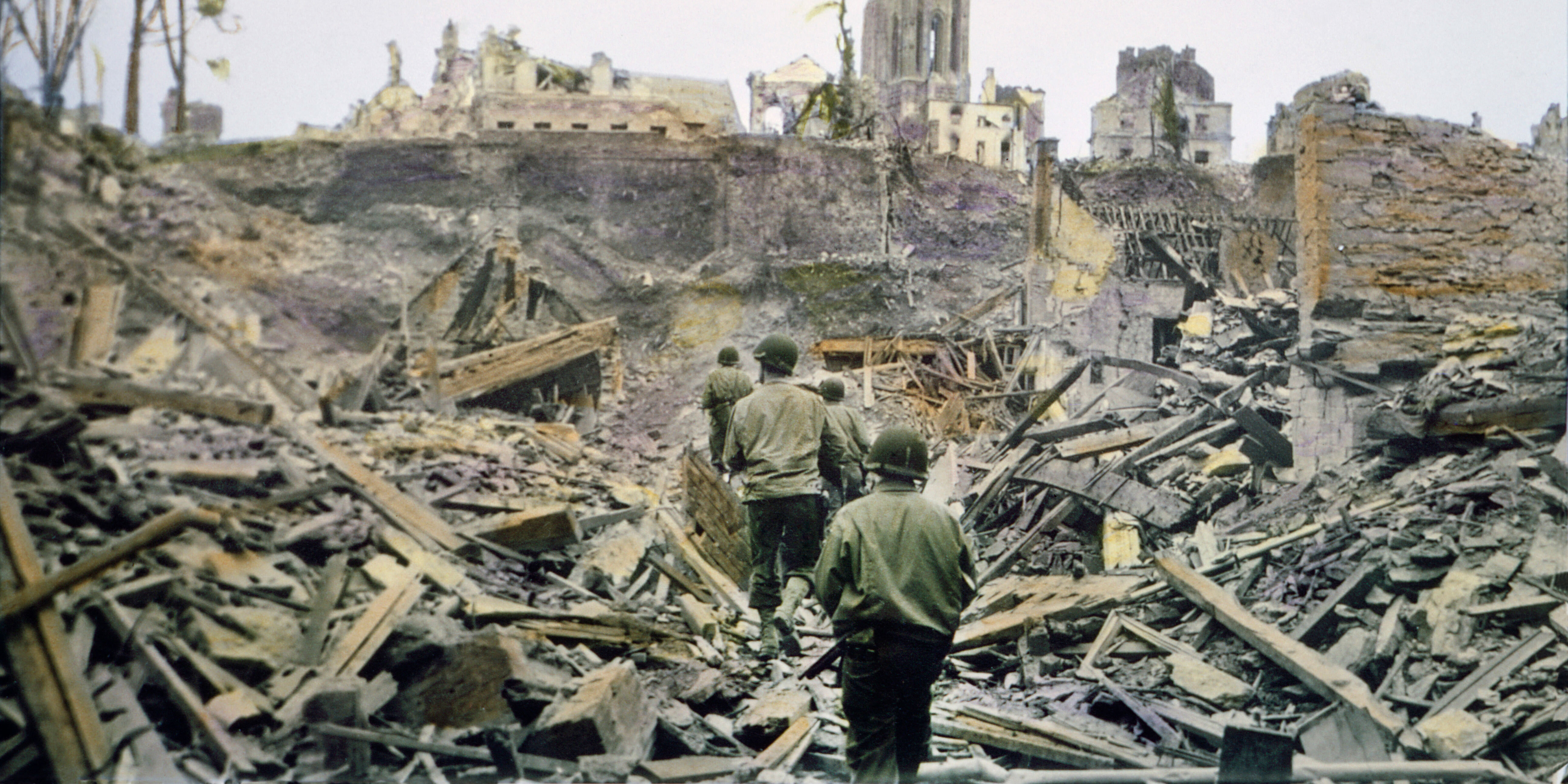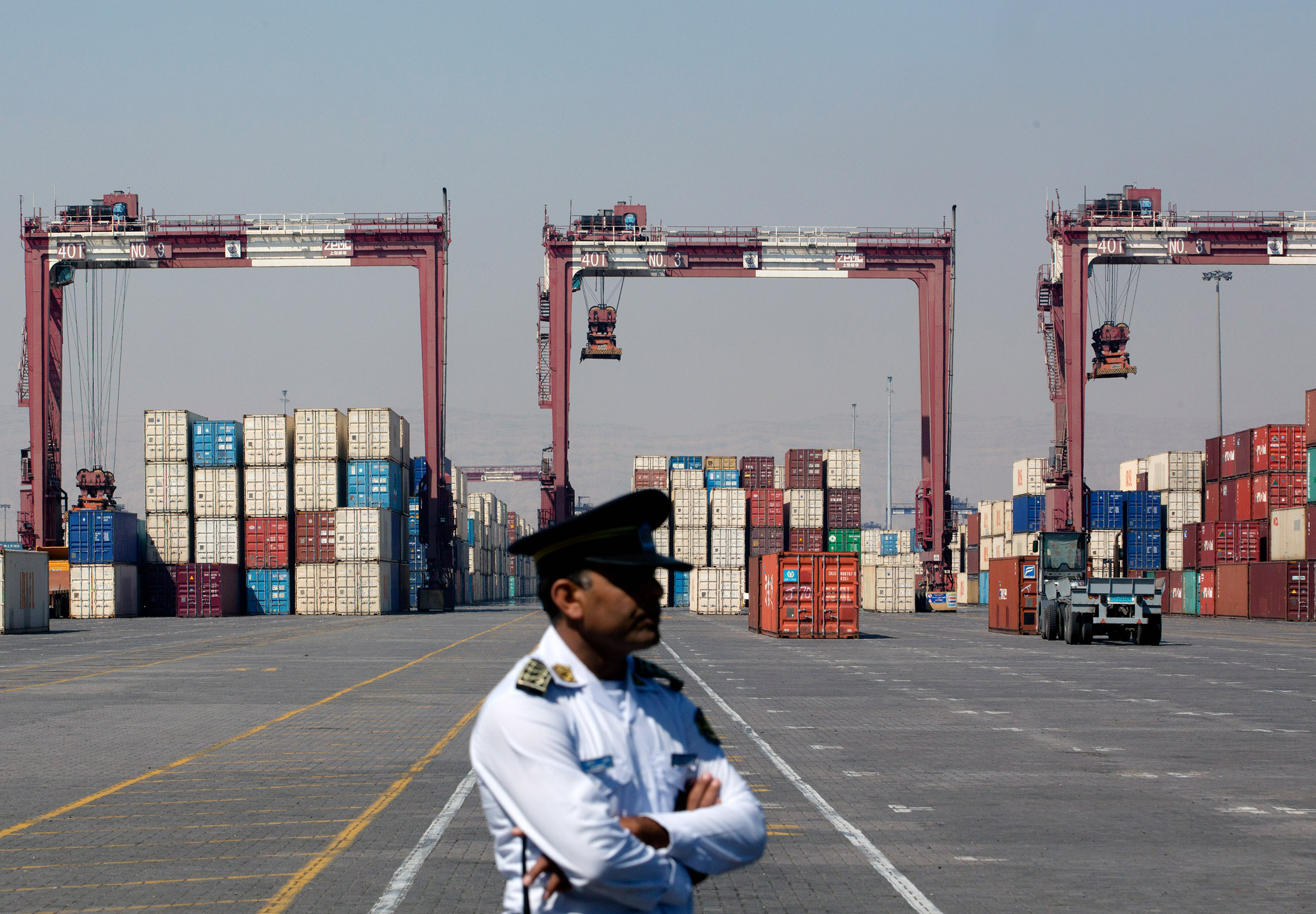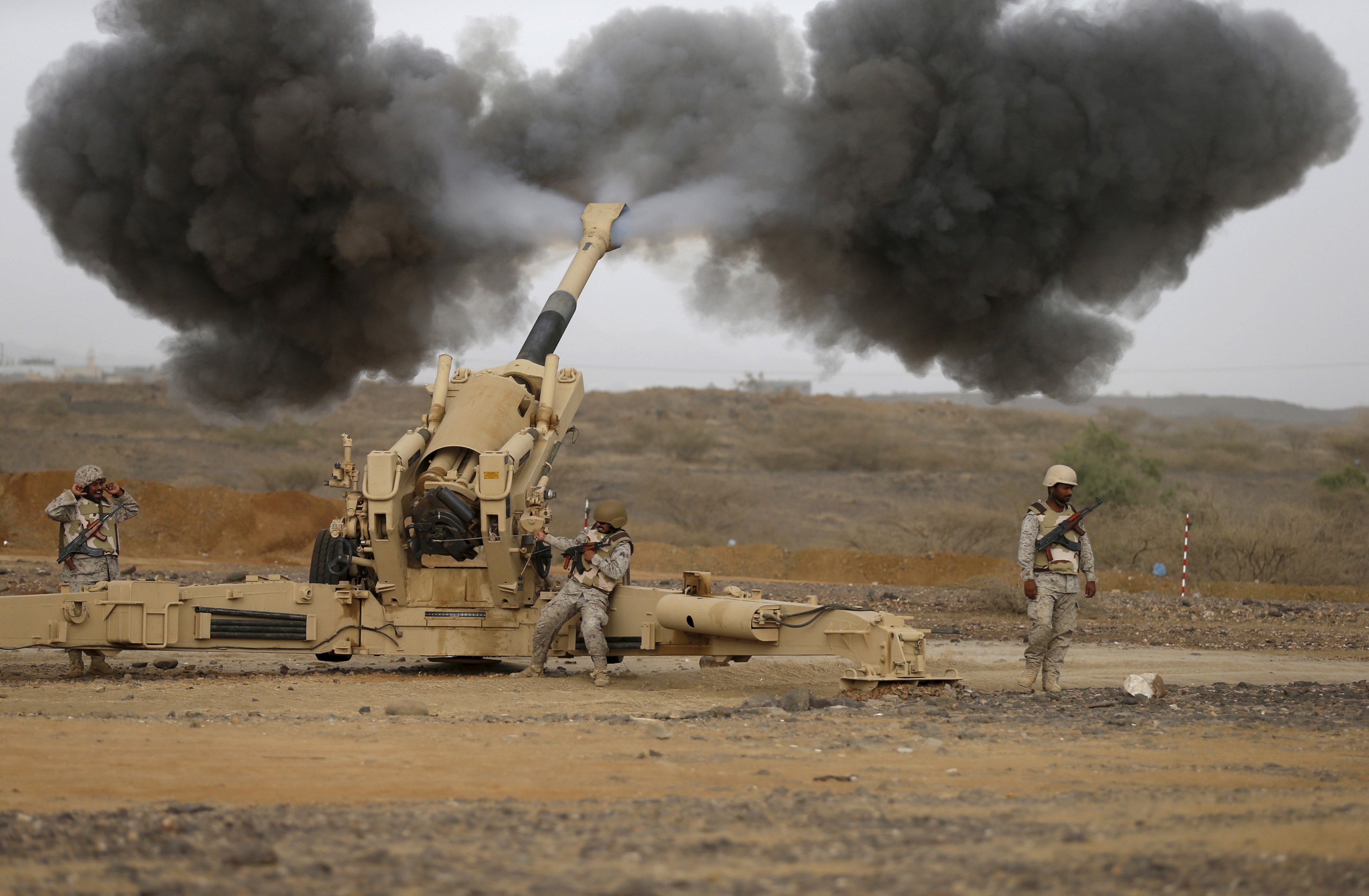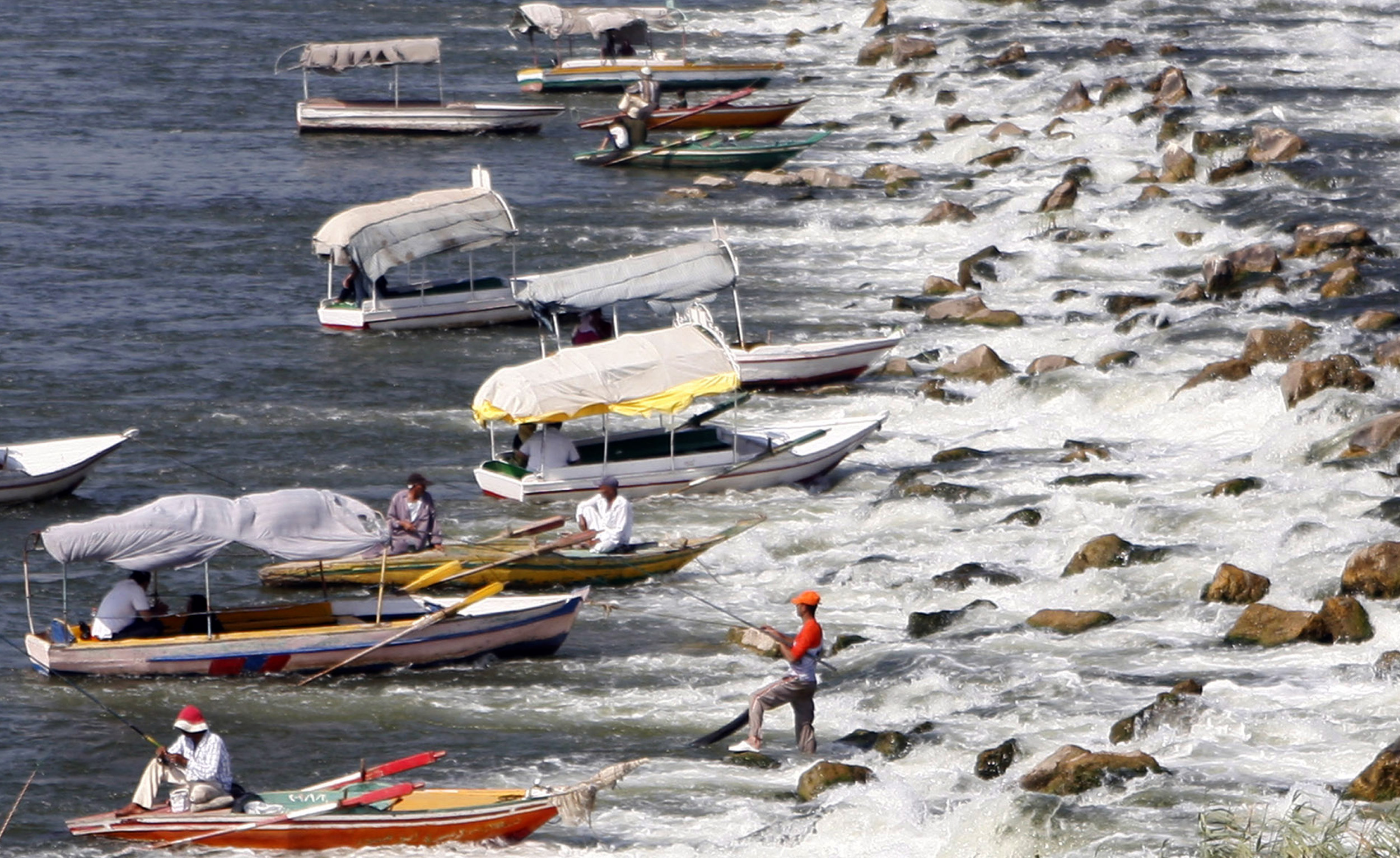What Is Interstate Conflict?
Bombs and bullets are not always required for countries to come into conflict. From Russia’s war in Ukraine to a U.S. trade war with China, explore the different ways countries come into tension.
Wars between countries are among the greatest threats to world order. Throughout history, they have killed tens of millions of people, displaced entire communities, and caused trillions of dollars of destruction. Wars also contributed to the spread of hunger, poverty, and disease.
The good news is that interstate warfare declined since the end of World War II. However, despite this trend, countries still struggle to peacefully coexist. As a result, the prospect of full-scale war threatens the current world order.
This resource explains the decline in interstate war, breaks down the ways countries continue to fight, and explores how two of the world’s most powerful countries—the United States and China—are sliding into conflict without having fired a single bullet
Why has interstate war become less common?
For one, the potential devastation of war has increased since the introduction of nuclear weapons at the end of World War II. A full-scale war today could spell the end of civilization itself.
Further, powerful alliances like the North Atlantic Treaty Organization (NATO) can deter interstate war, and International institutions such as the United Nations also provide forums for countries to resolve conflict peacefully. However, the fact that those institutions cannot fully prevent conflicts—for example, the ongoing war in Ukraine—is noteworthy.
Some political scientists attribute that trend to the worldwide increase in democracies. They argue that democracies are less likely to fight one another and that accountable leaders are less willing to wage potentially costly and unpopular wars. Other experts believe that an increase in international trade has made the world a safer place, as economically interdependent countries are less apt to go to war.
What types of conflict occur between countries?
The world is far from a harmonious place. Countries continue to try to increase their power, undermine their rivals, and advance their national interests. In some cases, violent interstate conflict occurs but stops short of an all-out war. In other instances, countries battle for influence through a range of economic, diplomatic, and cyber tools. This form of interstate conflict can be less violent than conventional war. However, non-violent conflict still poses considerable risks to people and their governments.
Armed Force
Armed force involves a country or another entity using human and financial resources to use violence to influence a situation and pursue objectives. In recent years, for instance, Russia used armed force to annex Ukraine’s Crimean Peninsula, resulting in escalating violent warfare between Russia and Ukraine. Similarly, China continues to threaten to use force to achieve unification with Taiwan. The United States has also used armed force to pursue various interests abroad, including combating terrorist threats, addressing humanitarian crises, and ousting unfavorable regimes. Military operations can also be conducted in self-defense, to stem civil unrest and to secure access to resources—among other objectives.
Cyberattacks
Countries can use technology to target an adversary’s infrastructure and vital facilities. These attacks included assaults on energy grids, communications networks, and banking infrastructure. Cyberattacks allow countries to attack opponents covertly, from far away, and at relatively low risk. Israel, for instance, has reportedly launched cyberattacks on Iranian computer systems operating both nuclear enrichment facilities and a major port.
Sanctions
Sanctions are economic penalties countries use to compel people, companies, and other governments to change their behavior on a broad range of issues, including nuclear proliferation and human rights. Although sanctions are seen as low-cost alternatives to war, they can still have devastating consequences by cutting off countries’ access to food, energy, and financial resources. U.S. sanctions on Cuba are estimated to have cost the country approximately $130 billion over the last sixty years—a figure far larger than Cuba’s entire economy ($100 billion in 2018). Although, while sanctions can accomplish modest objectives, they rarely force a country to fundamentally change course. Cuba’s communist government has endured in the face of massive U.S sanctions, as has Iran’s revolutionary government and North Korea’s brutal dictatorship.
Trade War
Tariffs (taxes on imports) or quotas (hard limits on how much of a particular product a country can import) are two tools governments can use to give their domestic industries a leg up on foreign competition or punish other countries for political reasons. Those actions, however, are often costly for both sides, as they limit an exporting country’s ability to sell products and can also make goods more expensive for importing countries. Japan and South Korea are stuck in a trade war that has economically harmed both sides. This economic conflict has also impacted other countries that rely on the cheap production of electronics across free-flowing Asian supply chains.
Proxy War
Rather than waging war directly, powerful countries can fight one another by funding or arming opposing sides in a third country. Proxy wars limit the costs of war and the number of citizen deaths for those powerful countries. However, they can also escalate into deadlier affairs for countries where the fighting is occurring. The Middle East hosts several proxy wars in which rival countries—most notably Iran and Saudi Arabia—fund, train, and equip opposing sides in various conflicts. Although the two regional powers have largely refrained from full-scale war, their involvement in those local conflicts has contributed to hundreds of thousands of deaths in Syria and driven millions towards starvation in Yemen.
Domestic Destabilization
Governments can directly interfere in another country’s internal affairs by supporting—or even arming—opposition, separatist, or terrorist groups to promote instability within an adversary’s borders. This destabilization is often done through intelligence gathering and covert action. India and Pakistan, for example, have long accused each other of backing separatist groups in restive areas of their respective countries.
Electoral Interference
Countries can attempt to influence elections in other countries to support their preferred candidate or to sow mistrust in an electoral process. Russian election interference in the United States, France, and Germany has been well documented. But other countries interfere in elections too. In 2017,Turkish President Recep Tayyip Erdogan publicly encouraged more than one million Germans of Turkish descent to vote against two German parties, calling them “enemies of Turkey.”
Diplomatic Conflict
Countries can try to punish or isolate other governments by limiting or even cutting off diplomatic relations. Diplomatic conflict can take the form of expelling another government’s diplomats or ordering the closure of that country’s consulates or embassies. Countries including Bahrain, Egypt, Saudi Arabia, and the United Arab Emirates cut ties with Qatar in 2017 over accusations of funding terrorism. Those governments closed Qatar’s embassies in their countries and banned Qatari planes from using their airspace. Additionally, Saudi Arabia sealed off Qatar’s only land border. Those actions could cost Qatar billions of dollars.
Environmental Conflict
Countries can manipulate shared ecosystems—like rivers and forests—to benefit themselves or deliberately harm neighbors. Such environmental conflict can contribute to food and water shortages, particularly as global temperatures rise and ecosystems become increasingly vulnerable. Ethiopia’s construction of a dam on the Nile River threatens Egypt’s vital water source, which supports nearly all of the country’s one hundred million residents. Egypt has threatened military action to combat the environmental threat posed by the dam’s construction.
How are the United States and China in conflict?
Even if not at war, the United States is in conflict with several countries. It levies sanctions against Cuba, Iran, and North Korea, and bears the brunt of election interference from Iran and Russia. The United States also backs opponents of Syrian President Bashar al-Assad and Venezuelan President Nicolás Maduro. The United States and China have not directly fought each other since the Korean War, but the world’s two largest economies have engaged in costly economic conflict.
The two countries are embroiled in a trade war, with the United States accusing China of stealing intellectual property from American companies and violating the commitments it made when it joined the World Trade Organization (WTO). Similarly, China accuses the United States of not upholding its own WTO commitments. Since 2018, the United States has imposed tariffs on a wide variety of Chinese goods; China retaliated with tariffs of its own. As a result, goods are more expensive for consumers in both countries, harming both national economies.
The trade war is closely related to escalating technology competition between the two countries. Citing national security risks, the United States banned China’s largest telecommunications company, Huawei, from building 5G wireless networks in the United States. In 2020, The Trump Administration announced sanctions on foreign companies that sell certain technology to Huawei. Similarly, the United States has cited national security concerns in attempting to ban popular Chinese-owned applications like TikTok and WeChat. Meanwhile, China has prohibited large U.S. technology companies—including Facebook, Google, and Twitter—from operating in China given their potential to enable political dissent and instability.
In 2020, the United States placed economic sanctions on Chinese companies and political leaders linked to human rights violations in China’s Xinjiang region. The Chinese government has reportedly detained over one million ethnic Uyghurs and other Muslim minorities in so-called reeducation camps. As retaliation for these reported human rights violations, the United States restricted targeted Chinese companies from buying American technology. Those sanctions also banned several senior officials and their families from entering the United States or accessing assets they own in the country.
The United States and China have also traded accusations of meddling in the other’s domestic affairs. China claims the United States is undermining Chinese authority in Hong Kong by supporting pro-democracy protesters. The United States, meanwhile, has accused China of attempting to influence U.S. elections.
Additionally, members of the Chinese military executed cyberattacks on the U.S. government and private companies. In 2017, Chinese hackers stole the Social Security numbers of over 145 million Americans following an attack on credit agency Equifax. Tensions over cyberwarfare escalated into diplomatic conflict in 2020 when the United States ordered China to close its consulate in Houston over allegations of Chinese espionage and intellectual property theft. In retaliation, China shuttered the U.S. consulate in Chengdu. This cut off U.S. access to nearby Tibet, where the United States has accused China of human rights violations.
None of these issues has led to all-out war, but escalating conflict between the world’s two most powerful economies have serious political and financial implications. Further, the increasing tensions that come with each instance of economic, political, cyber, and diplomatic conflict raise the likelihood that all-out war could occur. For instance, any Chinese aggression against Taiwan (a democratic self-ruling island that China claims as its own), in the South China Sea (an area where China’s expansive claims to islands conflict with those of U.S. allies), or in the Senkaku Islands (which China claims but the United States recognizes as Japanese territory) could lead the two global powers into a violent chapter in their ongoing rivalry.



